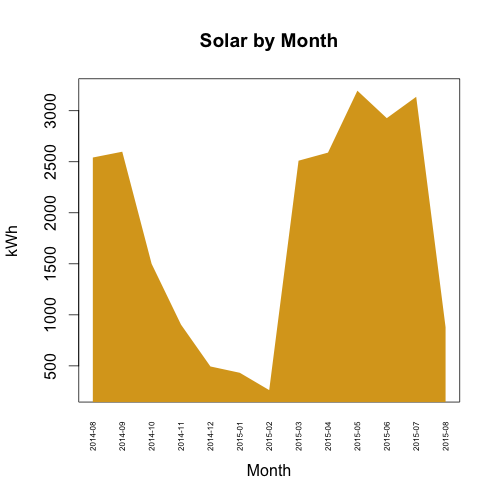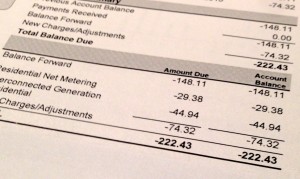a year of solar
¶ by Rob FrieselI got a little braggy about this on Twitter earlier this year… 1
Our little solar project is doing pretty well. 4376.89 kW/h total yield. Thank you, @suncommon pic.twitter.com/ewezOB8LDj
— Rob Friesel (@founddrama) June 6, 2015
And then again on Instagram…
But I’ll tell it straight: when we went with our solar project last year, I knew in my bones it was the right thing to do. And a year later, looking over the data, I’m even more sure of it.

On those sunny months, we’re putting out around 2510 kWh 2 — which equates to the greenhouse gas emissions resulting from about 4121 miles driven in a gasoline-powered car; or the CO2 emissions from about 1859 pounds of coal burned for electricity; or (more positively) the carbon sequestration from 44.4 trees over 10 years of growth. 3 Even on our poorest months, 4 we are still producing around 262 kWh and offsetting about 194 pounds of coal burned for electricity. Reflecting on the total for the year, we’ve produced around 23969 kWh — which offsets the annual electricity consumption of approximately 2.3 homes.
This is what environmentalism in action looks like.
UPDATE: I tweeted about this post and it got a little buzz. Some of which was @SunCommon’s that cited the video in which yours truly makes a small appearance.
We believe everyone deserves a healthy environment and safer world. Here's our story. Video featuring @founddrama! https://t.co/afJxD6eJlH
— SunCommon (@suncommon) August 11, 2015
- It’s probably worth pointing out that, in this image, I had miscalculated the kWh values. A quirk of R appears to be that it imports values from a CSV as factors, even when they look like numbers. And then even when you remember that it does that, a simple
is.numeric()casts those factors to numbers by casting them to the index of each factor! Which is why it looked like I was offsetting the emissions of 91.5 gasoline-powered cars each month. Which, maybe I would if I could afford that, but I can’t so I won’t.[↩] - That figure is derived from the median one-month output over the first twelve months of operation.[↩]
- These figures are derived from calculations made on the EPA’s Greenhouse Gas Equivalencies Calculator.[↩]
- February, I’m looking at you![↩]


Leave a Reply